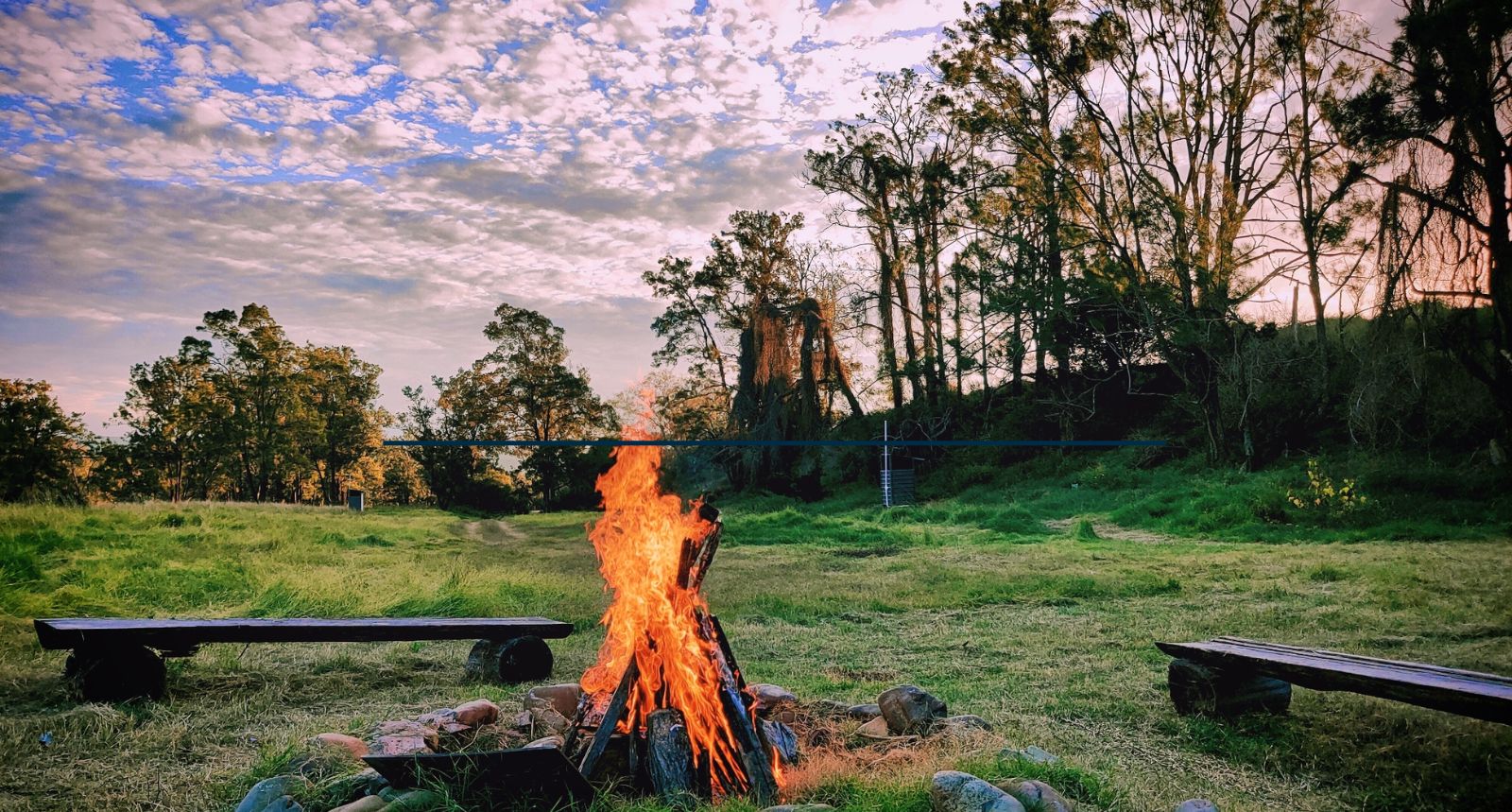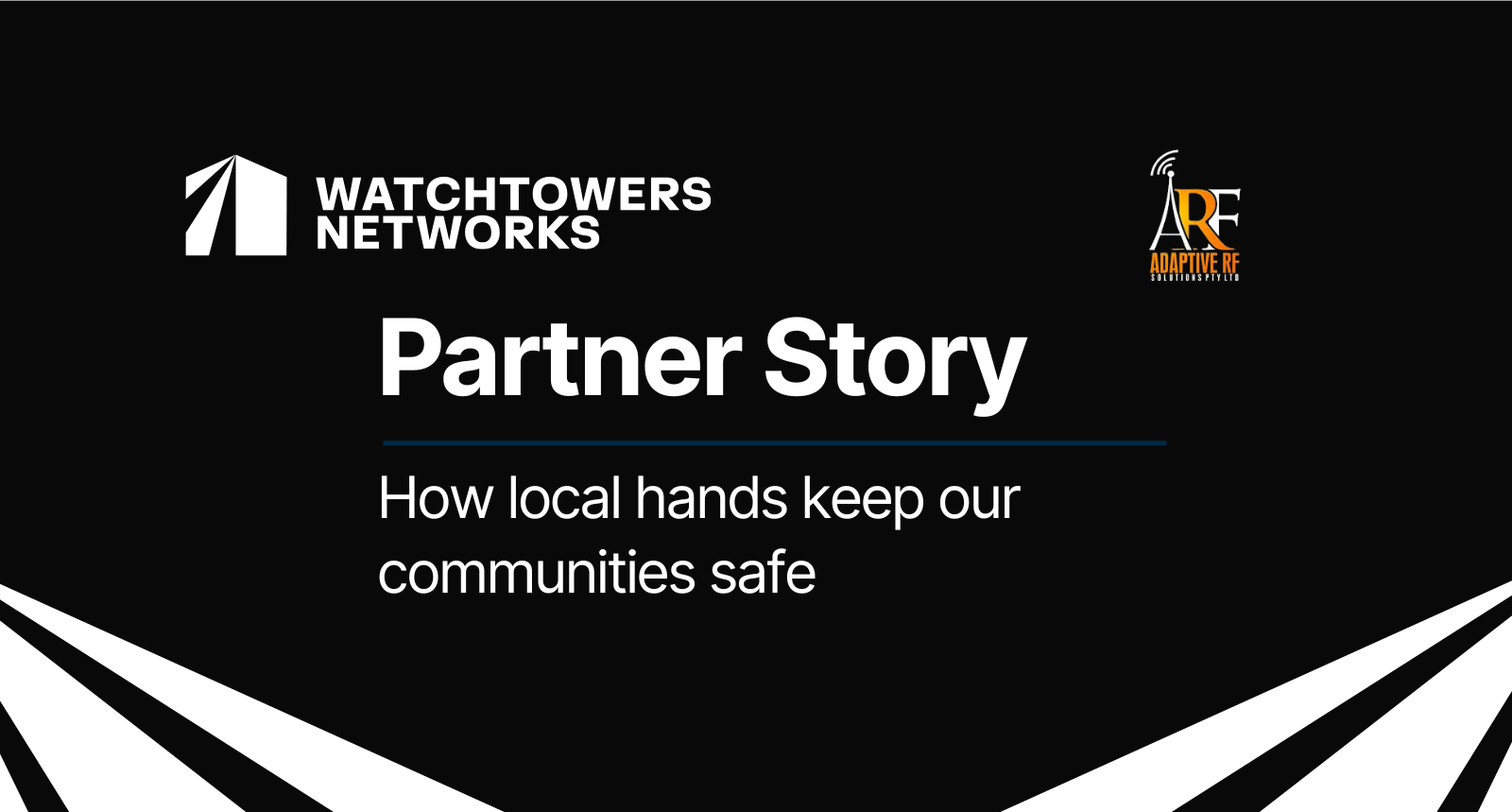When it comes to fighting fires, having the right information at the right time can mean the difference between the flames being small and manageable, or large and uncontrollable.
The team at the Australian Capital Territory Rural Fire Service (ACT RFS) and the ACT Emergency Services Agency know this better than anyone. For decades, fire towers have been a frontline defence, helping to spot fires early. But as fire seasons have grown longer and more intense - and particularly in the aftermath of the 2019/20 season - it became clear that there was an opportunity for traditional fire detection methods to evolve.
Rather than just adopting a new technology, ACT RFS took a different approach - they helped build it.
This is the story of how ACT RFS and WatchTowers Networks worked together to co-develop WatchTowers Command, a real-time fire detection and monitoring platform designed with first responders, for first responders.
Why bushfire detection needed to evolve
.00_00_05_05.Still001.jpg)
For years, bushfire detection in the ACT, as in many other jurisdictions, relied on fire towers operated by land management agencies. These towers played a critical role in spotting fires early, but they had limitations. As fire seasons have changed, it has reinforced the need for better situational awareness for all levels of fire management and community understanding.
Recognising the need for change, ACT RFS teamed up with a coalition—including the Minderoo Foundation , Optus Enterprise and Business , and others - began working together to explore ways to enhance fire detection, primarily by adding cameras to fire towers. While the fire services welcomed these efforts, early attempts faced their fair share of challenges - from connectivity issues to false positives from AI-powered detection systems.
With this mindset, ACT RFS decided to take an active role in designing and refining the technology they would use. WatchTowers Networks - the company that evolved out of those early efforts and partnerships - stepped in; not just as a vendor, but as a development partner. The two teams worked closely to create a system tailored to meet everchanging real-world firefighting operations.
Co-development in action
The collaboration was hands-on from the start. ACT RFS operators trialled early versions of WatchTowers Command, providing real-world feedback that helped refine the platform. One of the first major challenges was false positives from the various AI smoke detection vendors - AI-generated alerts often flagged controlled burns as potential threats, creating unnecessary noise. To tackle this, WatchTowers Networks and RFS worked with their partners to fine-tuned their AI models and integrated human in the loop validation, ensuring that only genuine threats stood out. This combination of cutting-edge technology and expert oversight made the system both smarter and more reliable.
Through extensive testing, the teams also discovered that a single camera wasn’t enough to provide the level of detail needed for effective fire detection. Fires behave unpredictably, and a single fixed camera, while effective, did not allow the ACT RFS to gain the level of situational awareness required if it had to be taken off the task of monitoring and continuous detection.
The solution? A dual-camera system. One camera continuously scans the horizon, using AI to detect anomalies, while the second camera can be locked onto fire activity for a closer, real-time assessment. This approach not only reduced false positives, but also provided responders with clearer, more actionable information.
ACT RFS was also determined to keep its experienced fire tower operators at the centre of the process. Instead of replacing personnel, the new system enhanced their capabilities. Now, a single operator can monitor multiple towers from a central location, boosting efficiency while keeping human judgment in the loop. “It’s like having eyes everywhere without leaving the room,” one operator told us.
Beyond fire detection, WatchTowers Command has broadened its situational awareness focus, integrating fuel analysis and environmental monitoring to allow operators to predict and factor in fire behaviour. This shift meant responders could make proactive decisions, rather than just reacting to emergencies.
Check out our previous blog, Why We Don’t Build in a Bubble, which highlights the value of designing solutions with, not for, end users: www.watchtowers.io/blog/why-we-dont-build-in-a-bubble
The future of fire detection
Since its deployment, WatchTowers Command has already made a tangible impact for the ACT RFS. Since its rollout, Command has detected and monitored over 1000 fire events across the ACT, giving responders a real-time edge. Just this season, a hazard reduction burn in NSW caused a large smoke plume over southern Canberra. Concerned residents feared it was an uncontrolled bushfire.
WatchTowers Command had quickly identified it as a controlled burn, not a bushfire, allowing operators to reassure the public and keep crews focused on genuine threats. Without round-the-clock tower staffing in the past, that clarity wasn’t assured—now, Command delivers it anytime, supporting both agencies and communities. This showed how having a system on hand at any time can help fire agencies manage situational awareness and support the community.
But innovation doesn’t stop here. While WatchTowers Command currently operates across four fire towers in the ACT—each equipped with two cameras—we’re actively expanding within the territory to cover high-risk areas like the Brindabella Range and urban interfaces. Beyond the ACT, we’ve already extended the network well into NSW, partnering with agencies to enhance coverage of fire-prone regions. This cross-border collaboration, powered by Command, ensures all agencies—from ACT RFS to NSW partners—see the same real-time picture, enabling seamless integrated operations and amplifying surveillance and response capabilities across state lines.
Beyond expanding the network, interagency collaboration is a key focus. As more land agencies, private landowners, and emergency services join the WatchTowers Networks community, costs are shared, and fire detection grows more efficient over a wider area. With additional organisations contributing to and accessing Command, real-time data sharing and coordinated response efforts are reaching new heights—critical for managing fires that don’t stop at borders.
Key takeaways for other emergency services
ACT RFS’s experience in the co-development process with WatchTowers Networks offers key insights for other fire and emergency services:
- Now is the time to innovate: The best time to develop new tools is before the crisis, not during or after.
- Test and iterate early: Real-world feedback ensures technology meets actual operational needs.
- Think beyond fire season: The same tools can be used to support storm tracking, hazard reduction planning and emergency response year-round.
By working together, ACT RFS and WatchTowers Networks have created more than just a tool - they’ve built a smarter, more connected approach to fire management, setting the stage for the future of emergency response.
.png)


.jpg)